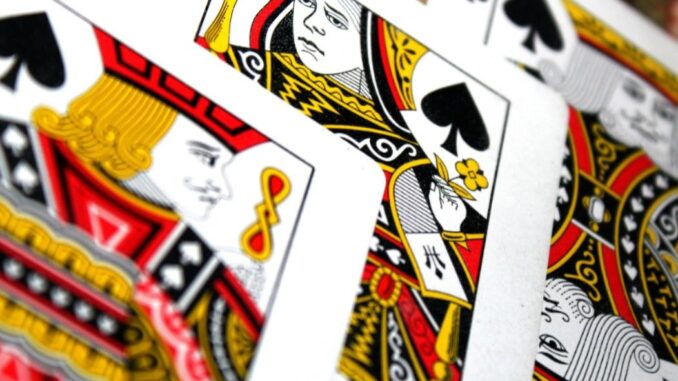
1. Preflop
Situation: Hero (UTG+2) opens to 375 with K♠ Q♠ with an effective stack of 9000, blinds 75/150. The cutoff and button call.
Analysis:
- The preflop raise is standard, especially given a tight-passive table.
- No 3-bet indicates opponents are likely holding weaker pairs, suited connectors, or medium cards.
- The chance that someone holds a premium hand (AA, KK, QQ, AK) is low, especially without a 3-bet.
💡 So let’s learn the lesson: Preflop raise is optimal.
2. Flop Q♣ 5♠ 4♣
Action: Hero bets 600 into a 1350 pot.
Analysis:
- Hero has top pair with a backdoor flush draw.
- A smaller value bet (~45% of the pot) allows calls from marginal hands (7-7, 6-5, weak queens) that might fold to a larger bet.
- A large bet (1200+) would only get called by top pairs and strong draws, reducing value.
💡 So let’s learn the lesson: Bet sizing is correct for value.
3. Turn 10♠
Action: Hero bets 1000 into a 3150 pot.
Analysis:
- Hero now has top pair plus a flush draw.
- Value betting is still appropriate: if behind, Hero has implied odds to hit the flush on the river.
- Cutoff raises to 3000, signaling a strong hand — likely a set, two pair, or a strong draw.
Call odds:
- Pot: 7150, Call: 2000 → needs ~21% equity to justify a call.
- If opponent has a set, Hero has ~18% equity → slightly below threshold, but with flush potential and implied odds to win opponent’s remaining stack, calling is justified.
💡 So let’s learn the lesson: Calling the turn with a flush draw + top pair is mathematically and strategically correct.
4. River A♠
Action: Hero shoves all-in and gets called by the opponent holding 4-4.
Analysis:
- The river completes Hero’s flush. All-in is logical to extract maximum value, leveraging the opponent’s fear on a dangerous board.
- Opponent with a set did not expect the flush and calls.
💡 So let’s learn the lesson: Excellent value extraction on the river.
5. Key Mistake by the Cutoff
Mistake:
- On the turn with a set on Q♣ 5♠ 4♣ 10♠, the cutoff makes a small raise (3000 into 3150).
- Optimal strategy: bet/raise on the flop or turn to win the pot immediately, not give Hero a chance to improve.
- The small raise allowed Hero to call with top pair + flush draw → cutoff loses the tournament.
💡 So let’s learn the lesson: The cutoff’s mistake was not maximizing the strength of their hand and letting Hero catch up.
6. Main Lesson
- Slow-playing is dangerous when opponents can make strong draws or top pairs.
- Small bets on a strong board can cost heavily, especially if the opponent can improve to the best hand.
- Sometimes it’s better to take the pot immediately rather than try to trap.
If you want, I can also make a visual diagram with the pot sizes, bets, and equity to make this hand even easier to understand.
interesting analysis of one situation. it’s about the danger of slow playing
